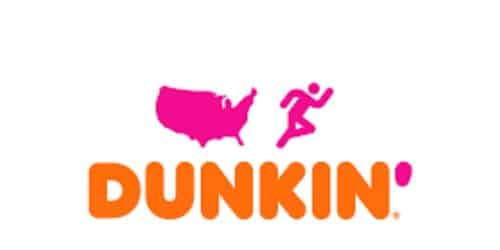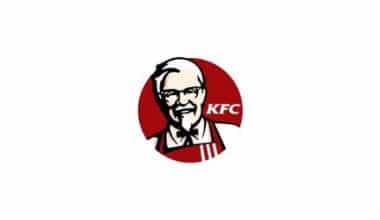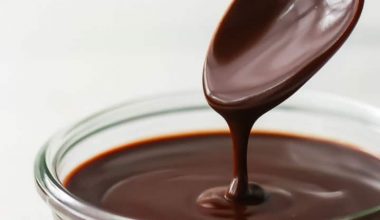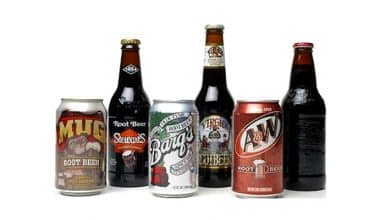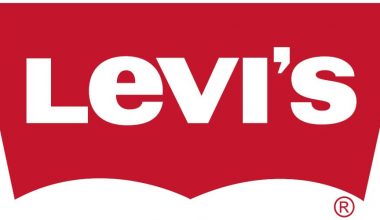Dunkie, the company’s mascot, was first featured on the Dunkin’ Donuts logo in 1955. The body of the dancing Dunkie was a mug, while his hands, legs, and head were formed of donuts. The 1950 script logo could be seen over the cup. This variant was first registered in 1961. This article is about the history of the current Dunkin’ logo, which was redesigned in 2022 and is still in use in 2023.
What Does Dunkin Stand For?
Rosenberg first called his eatery “Open Kettle” in 1950. According to company legend, an architect working for the restaurant was inspired by the idea of dunking doughnuts into coffee.
The Dunkin’ Donuts logo represents the cafeteria chain’s cheerful mood, attractiveness, and hospitality, where you may enjoy a variety of treats. Initially, their menu consisted of hot coffee and several types of donuts, as shown in the logo. The visual identity has evolved with the menu’s expansion, preserving the color scheme but not the shape. A freshly cooked doughnut and a joyous environment are conveyed by candy pink and powdery yellow.
Dunkin’ Donuts LLC, abbreviated DD, is an American multinational coffee and doughnut corporation as well as a quick service restaurant. In 2004, Dunkin’ and Baskin-Robbins became subsidiaries of Dunkin’ Brands, located in Canton, Massachusetts, until they were purchased by Inspire Brands on December 15, 2020.
In January 2019, the chain began rebranding as a “beverage-led corporation,” and was rebranded Dunkin’; while stores in the United States began using the new name, the rebranding will eventually be pushed out to all of its foreign locations. Dunkin’ Donuts is one of the world’s largest coffee and donut shop chains, with around 12,900 outlets in 42 countries. It sells donuts, bagels, coffee, and “Munchkins” donut holes.
What Was Dunkin Donuts’ Original Slogan?
Dunkin’ Donuts, now known as Dunkin’, launched a new campaign in 2006 called “American Runs on Dunkin’.” This phrase and diagram portrayed Dunkin’ Donuts as a nationwide movement that supports the American people as they work hard to stay up with American culture and fulfill their dreams.
This American coffee business has multiple slogans that are employed at various periods. ‘America Runs on Dunkin’ Donuts’ was one of the first and most successful. This marketing call was designed to be an advertisement, conveying a nationwide desire to make their aspirations a reality. In this instance, it is to recharge with positive cheerfulness and delight by enjoying the taste of exquisite dishes and drinks supplied by restaurant chains. Its logo is the Dunkin’ Brands Group (DNKN)
New Dunkin Logo
The new design communicates the company’s focus on serving quality coffee quickly while honoring Dunkin’s tradition by preserving the signature pink and orange colors and typography launched in 1973. However, the new identity will appear on packaging, as well as the company’s advertising, website, and social media, beginning January 1. The new “Dunkin'” logo will be displayed on all new and rebuilt establishments in the U.S. and, eventually, globally. In the past year, the brand tested its new logo, including on outdoor signs at Dunkin’ Donuts stores.
“The new logo is one of the numerous factors they are doing as part of the business plan for development to enhance the Dunkin’ experience to customers,” says Dunkin’ Brands CEO and Dunkin’ U.S. President David Hoffmann. They are working to serve guests amazing beverages, tasty food, and unsurpassed convenience, from next-generation restaurants to menu innovation, on-the-go ordering, and value offerings, all delivered at the speed of Dunkin’. “They feel that changing Dunkin’ Donuts while embracing its legacy will keep the brand relevant for future generations.”
Because it just features the initial portion of the corporate name, the current logo shows the breadth of Dunkin Donuts. The designers purposefully eliminated the word Donuts to demonstrate that the menu is not confined to this product.
What Is the New Symbol for Dunkin Donuts?
The new Dunkin Donuts logo is minimalistic and straightforward. It is as short as possible since the corporation that runs a prominent coffee shop chain decided to update the logo and make it appealing to the younger generation, which is prone to nihilism. In order to accomplish this, the designers not only deleted all visuals from the logo (a glass of steaming coffee, a background square), but also dropped the second part of the name. As a result, the logo now only has one word: ‘Dunkin’.’ It’s finished with an apostrophe.
The Dunkin’ Donuts Blueprint for Growth Includes a Brand Refresh
The new branding, created in collaboration with new creative and branding agencies Jones Knowles Ritchie (JKR), BBDO New York, and Arc Worldwide, is one component of Dunkin’s multi-faceted growth strategy, which aims to convert the firm into the leading beverage-led, on-the-go brand. Recent initiatives have included a simplified menu, a greater emphasis on beverages such as Cold Brew Coffee, Nitro Coffee, and Iced Teas, the introduction of novel products such as Donut Fries, a greater emphasis on On-the-Go Mobile Ordering, and, most importantly, the introduction of Dunkin’s next generation design concept.
The latest generation shop design is specifically designed to satisfy the needs and desires of today’s on-the-go consumer, with new and inventive aspects to make running on Dunkin’ faster and more convenient than ever before. An eight-headed tap system for cold beverages encourages crew members to serve guests like bartenders, a glass bakery case puts donuts in the forefront within arm’s reach of guests, and more prominent and engaging mobile-order pickup areas, as well as the first-ever mobile order drive-thru lane to allow mobile users to speed past the line, are among the key in-store elements.
Why Did Dunkin Change Their Logo?
Since 2006, the corporation has used “Dunkin'” in its motto “America Runs on Dunkin’,” and customers love it. Growing competition in the coffee and breakfast businesses has made Dunkin’ Donuts known for more than just doughnuts.
Dunkin’ Donuts’ redesign is primarily cosmetic, as the company will continue to serve a wide range of doughnuts and coffee (with seasonal flavors like Girl Scout cookie flavorings). The new logo retains Dunkin’s iconic orange and pink hues, but the product packaging is more modern.
Dunkin Logo History
However, according to the history of Dunkin’ Donuts, the global doughnut company and café chain adopted its first logo in the same year that it was founded, 1950. This year also marks the 60th anniversary of the company.
1950
Our list’s oldest Dunkin’ Donuts logo had nothing in common with the current one. The drab tint and handwritten style were so different from the cheery and plump lettering we were used to.
1960
However, the type used for the corporate name is different. The cup signifies that the company offers coffee, but the way the brand name is written represents a doughnut.
1976
The image was removed and replaced with the words “Dunkin’ Donuts” in orange and pink. The friendly font appeared appetizing, and the colors had a candy-like vibe to them.
2002
To the left of the corporate name, a steaming styrofoam coffee cup emerged. This change improved the logo’s representation of the clientele’s product offerings.
2007
The cup was given a more contrasting aspect by adding a brown outline and decorations. The half-rectangle beneath the cup was colored orange, and the acronym “DD” appeared on the cup.
2019
The company’s name and emblem were updated to better reflect the variety of items it offers. While the earlier form said “donuts and coffee” (in symbol language), the current Dunkin’ Donuts emblem gives a broader interpretation.
The Symbol’s Evolution
The hot pink color first appeared on the logo in 1960. The logo itself was a stylized coffee cup with the words “Dunkin’ Donuts” written in a circle around it. The orange color first debuted on the symbol in 1976. The new logotype simply included the company’s name.
Emblem
The most recent version of the design, which was released in 2006, contains a brown coffee cup that is inscribed with a “DD” monogram. This version of the logo was presented in addition to the pink and orange wordmark.
Font
The font is comparable to the Frankfurter and Debussy typefaces. The letters appear plump and round to the point of being edible, which is entirely appropriate for a doughnut firm.
Color
The use of magenta and orange on a white background produces a joyful, pleasant atmosphere.
Explanation of the History Dunkin Logo
Years of establishment 1948-2004
In 1948, William Rosenberg started Open Kettle, a donut and coffee shop in Quincy, Massachusetts (a Boston suburb), but after consulting with corporate executives, he changed the name to Dunkin’ Donuts in 1950. After selling donuts and coffee in factories and on construction sites, he came up with the restaurant’s concept.
At the age of 25, Rosenberg’s son Bob took over as CEO of the company, and Dunkin’ Donuts established its hundredth shop that year. Dunkin’ Donuts was a subsidiary of Universal Food Systems at the time, a conglomerate of ten local food-service firms and the menu options at Dunkin’ Donuts outlets varied widely, with some offering full breakfasts and others serving simply donuts and coffee.
Other businesses in Universal Food Systems’ portfolio were sold or closed, and the firm was renamed Dunkin’ Donuts. The menu and shop format was standardized, and new menu items were added. Counter-service and ceramic coffee cups were phased out in the early 1980s in favor of self-service counters and paper cups. The chain went public in 1968 and was purchased by Allied Lyons, the owner of Baskin-Robbins, in 1990. By 1998, the brand had expanded to 2,500 stores globally, with annual sales of $2 billion.
Also in the 1990s, Dunkin’ Donuts developed by acquiring two competing bonds: Mister Donut and Dawn Donuts. At some point, the chain created a donut with a handle that was expressly made for dunking. Hand-cut donuts were eliminated in 2003 (except in Singapore) because they were more expensive than machine-cut doughnuts.
The Dunkin Logo History Management Years of Success From 2004 Till the Present
The company’s headquarters were relocated to Canton, Massachusetts, in 2004. Dunkin’ Donuts and Baskin-Robbins (then known as Dunkin’ Brands) were sold for $2.4 billion to a private equity consortium led by Bain Capital, Carlyle Group, and Thomas H. Lee Partners in December 2005. Dunkin’ Donuts’ global sales had reached $6 billion by 2010.
In December 2016, the Dunkin’ Donuts shop in Natick, Massachusetts, initiated a pilot to explore the notion of curbside pickup.
Dunkin’ Donuts began opening new concept shops in January 2018, beginning in Quincy, with modern design, cold beverages on tap and a single-cup brewing machine, additional packaged take-out options, and dedicated pick-up lines for mobile ordering inside and at the drive-thru. The proposal was touted as a step toward becoming an “on-the-go, beverage-led brand.” The business, along with others, began testing signage referring to the brand as just “Dunkin’,” eliminating the phrase “Donuts.”
Dunkin’ Donuts announced intentions in February 2018 to phase out polystyrene foam cups globally by April 2020 for environmental reasons.
In 2018
However, on July 11, 2018, Dave Hoffmann assumed the position of CEO from Nigel Travis. He plans to open 1,000 new locations outside of the Northeastern United States by the end of 2020, with a 3 percent revenue increase for stores open a year or longer. Also in late 2018, Dunkin’ Donuts installed espresso equipment in every feasible location and introduced espresso products made with a new formula.
Dunkin’ collaborated with Grubhub in June 2019 to launch its new Dunkin’ Delivers service. Later that month, in July 2019, Dunkin’ teamed with Beyond Meat to launch a vegetarian breakfast sandwich in Manhattan, making it the first restaurant brand in the United States to serve Beyond Sausage. The sandwich will be available nationwide later in 2019.
In a lawsuit filed in September 2019, the New York attorney general’s office claimed that Dunkin’ mishandled a series of cyberattacks directed at customers using the Dunkin’ mobile app. Thousands of usernames and passwords were taken in these assaults, which occurred in early 2015. According to the state lawsuit, Dunkin’ Donuts personnel were aware of the attacks but did not take proper action.
Dunkin’ Brands said in October 2020 that it was in talks with Inspire Brands, a private equity-backed corporation, about selling the company. On Saturday, October 31, 2020, Inspire Brands announced that it will acquire Dunkin’ Brands Group for $11.3 billion, which would include Dunkin’ Brands’ debt that Inspire Brands would assume. Inspire would pay $106.50 in cash for each share of Dunkin’ Brands. The acquisition was completed on December 15, 2020, and Dunkin’ Brands ceased to exist as a separate company, with Dunkin’, Baskin-Robbins, and Mister Donuts becoming part of Inspire Brands.
Dunkin Logo 2022- Present
In 2022, the Dunkin Donuts logo is now a coffee and donut company based in the United States. To accomplish this, she owns a restaurant business with over 12,800 outlets globally. Soft drinks and a variety of sandwiches are also available on the menu.
Dunkin’ Doughnuts eliminated the term “Donuts” from their name on January 25, 2019, to better reflect their product offerings beyond donuts and coffee. This logo was originally used at their new Quincy, Massachusetts facility in 2018, and it was rolled out the following year. Outside of the United States and barring a few nations, it is still known as “Dunkin’ Donuts.” The new name will eventually be applied to all of the company’s overseas locations.
The 2022 Dunkin’ Donuts logo represents the world’s largest doughnut company and one of the top coffee companies in the United States today. Dunkin’ Donuts, as one of the first true franchises, has become the first stop for donuts and one of the nation’s major coffee providers.
Dunkin’ Donuts has nearly 27 times the number of outlets as second-place Krispy Kreme and has managed to stay true to its roots while also allowing itself to innovate and change with the times.
However, in the Dunkin’ logo 2022, while the typography and color palette remains the same, the removal of the coffee cup icon and the word donuts from the logo (as well as the official name) allows for a broader interpretation and frees Dunkin’ to pursue other routes for brand promotion. The new design also allows “Dunkin'” to display in a larger font on mugs or shops, attracting customers’ attention faster and appearing more appealing.
Why Does the Dunkin’ Donuts Logo Look So Good?
The current logo has only been in use for three years, however, its origins date back to 1976. The original typeface and color scheme are still in use today. The typeface is fluffy, and the orange color of freshly made doughnuts is designed to conjure up images of donuts. Pink symbolizes enjoyment, enthusiasm, high spirits, and brightness.
The removal of “Donuts” from the name and emblem was intended to simplify the brand while paying homage to its legacy and opening up new options for Dunkin’ Donuts. It was first released in 2018 at its original location in Massachusetts, and then gradually expanded over the next year. The name has been slow to catch on, albeit slowly.
The Dunkin’ Donuts logo could be simplified and reduced in size due to the brand awareness linked with the color and typeface. Many large firms simplify their logos, allowing for greater diversity and, over time, improving brand identification even further.
What Does the Dunkin Donuts Logo Mean?
The name Dunkin Donuts has a basic connotation that is related to donuts. Legend has it that its creator is an executive architect who was inspired by the thought of dipping them in hot coffee. This was the message communicated by the trademark logo from 1960 to 1976. It replaced the previous notion connected with the cafe’s original moniker – Open Kettle (back in 1950).
On March 31, 1955, a script form of the words Dunkin’ Donuts was submitted and registered on February 2, 1960. A subsequent logo included a figure with a donut for a head and a coffee cup and donut body wearing a garrison cap, with Dunkin’ inscribed on both the coffee cup and the cap. The design was mostly done in yellow and brown. The logo was submitted on June 23, 1958, registered on May 23, 1961, and first used on July 1, 1964.
More Explanation
In 1961, the company began employing a hot pink color for its branding, as well as a logo depicting a stylized coffee cup with the company’s name rendered as a circle on one line, conjuring a doughnut plunging into the cup. Bright orange was introduced to hot pink in 1980. The current logo, as of 2014, is a variant of the logo that has been in use since around 1980: an all-capitals rendition of the words Dunkin’ Donuts (Dunkin’ in orange; Donuts in pink) in a thick, Frankfurter typeface with a coffee cup highlighted in brown with a “DD” monogram.
The firm stated in September 2018 that it would shorten its brand to Dunkin’, with a wider roll-out beginning in January 2019. The company acknowledged that Dunkin’ Donuts was already a popular shorthand name for the chain among customers and in its marketing (including the slogan “America Runs on Dunkin”), and that the rebranding would reflect the chain’s continuing shift toward being a “beverage-led” brand at a time when consumers have shown a preference for healthier trends and options as they consume fewer donuts. While stores in the United States began using the new name in 2019, the rebranding will eventually be implemented in all of the company’s foreign locations.
Who Created the Dunkin Donuts Logo?
The Dunkin’ Donuts logo was designed by George Nelson Associate. The Pratt Institute alumnus and industrial designer lectures at her own mater, fostering midcentury rigor in tomorrow’s designers. Dunkin’ Donuts is a worldwide coffee and donut company. It is based in the United States, and debuted its original logo design in 1950 when the firm was founded. It was a crimson wordmark written in a cursive script that looked like handwriting. This lasted until 1955 when Dunkin’ Donuts’ mascot Dunkie debuted on the company’s emblem.
What Does the Donut Logo Mean?
Year: 2007. Odd Future (or OFWGKTA) is an American hip-hop group created by Tyler, The Creator with his previous and present collaborators, including Frank Ocean, Earl Sweatshirt, Hodgy Beats, and others. Its logo simply depicts the brand’s initials as cartoon donuts in vibrant pink and yellow.
Why Is the Dunkin Logo Pink and Orange?
In the late 1970s, the Dunkin’ Donuts logo featured a candy pink and powdery yellow color scheme. They were suggested by Sangren & Murtha designer Lucia DeRespinis because the company decided to promote itself graphically. And for that, we needed a bright accent that would catch the attention of potential customers right away. She chose her daughter’s favorite colors because donuts are meant to boost vigor, and too ‘toasty’ colors aren’t.
Lucia N. DeRespinis, a Sangren & Murtha employee, recommended combining orange and pink. The problem was that these were her daughter’s favorite colors, and Dunkin Donuts’ visual identity lacked lightness and humor.
What Is Dunkin Donuts’ Slogan?
Dunkin’ Donuts, now known as Dunkin’, launched a new campaign in 2006 called “American Runs on Dunkin’.” This phrase and diagram portrayed Dunkin’ Donuts as a nationwide movement that supports the American people as they work hard to stay up with American culture and fulfill their dreams.
Is Dunkin and Dunkin Donuts the Same Thing?
Dunkin’ Donuts LLC, abbreviated DD, is an American multinational coffee and doughnut corporation as well as a quick service restaurant. Bill Rosenberg (1916-2002) started it in Quincy, Massachusetts, in 1950.
Why Is Dunkin Donuts Called Dunkin?
Dunkin’ Donuts’ redesign is primarily cosmetic, as the company will continue to serve a wide range of doughnuts and coffee (with seasonal flavors like Girl Scout cookie flavorings). The new logo retains Dunkin’s iconic orange and pink hues, but the product packaging is more modern.
Does Coca-Cola Own Dunkin Donuts?
Dunkin’ Donuts, which is owned by Inspire Brands, has chosen PepsiCo as its new beverage source in the United States, according to BD. In the United States, Dunkin’ Donuts has nearly 9,500 outlets.
What Is Dunkin Donuts Famous For?
Dunkin’ Donuts is indeed the world’s largest bakery and coffee franchise, supplying approximately 3.5 million clients each day. We serve 50+ varieties of donuts, but we also serve dozens of premium beverages, bagels, breakfast sandwiches, and other baked goodies.
Who Designed the Dunkin Donuts Logo?
Several agencies collaborated to create various variations of the Dunkin’ Donuts logo. Sangren & Murtha deserves a lot of credit, especially industrial designer Lucia DeRespinis, who came up with the candy pink and powdery yellow colors. These vibrant colors helped to make the insignia a well-recognized symbol. Cult status was also bestowed upon him by the agencies BBDO New York, JKR (Jones Knowles Ritchie), and Arc Worldwide. They were working on the overall notion of rebranding.
Conclusion
In terms of coffee sales, the brand primarily competes with Starbucks, as well as Honey Dew Donuts and Krispy Kreme Doughnuts. Dunkin’ Donuts debuted its first logo in 1950, the same year the company was formed. The initial logo was a dark red wordmark in a cursive form, but it has evolved significantly since then.
Related Articles
- COFFEE STOCKS: 5 Best Coffee Stocks 2023 ( + pricing plan )
- PINK TAX: Price Discrimination Based On Gender
- STARBUCKS CUSTOMER SERVICE: Best Practices Explained!!! (+ Free Tips)
- Instant Coffee Brands: The Best Low Acid & Decaf Brands(+Reviews).
- STARBUCKS LOGO: Evolution, Significance, Branding Models & Tips
